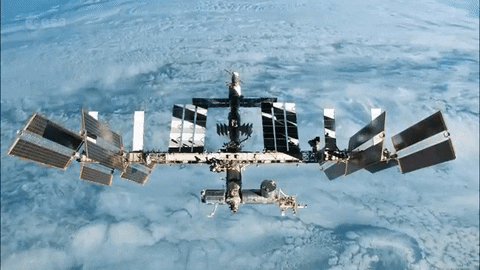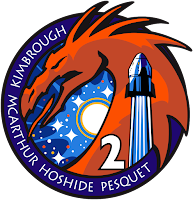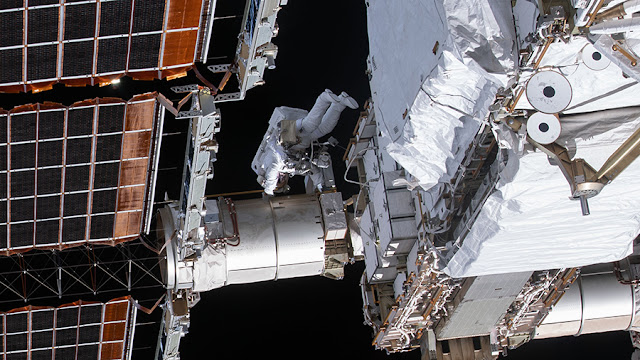ESA - European Space Agency patch.
Jan. 28, 2021
- Maintaining safety of operations and maximising scientific return are key concerns as satellites increase in number and complexity
- Artificial intelligence offers promising solutions to modern spaceflight challenges
- ESA and Germany’s DFKI institute have launched a new lab ‘ESA_Lab@DFKI’ for artificial intelligence research
It’s 4 October 1957, and the Soviet Union has just lofted humanity’s first satellite – Sputnik 1 – into the pristine orbital environment around Earth, marking the start of the Space Age.
Φ-week
Throughout 1960s and 70s, launches quickly increase, as the USA, Soviet Union and other countries race for space, discovering and utilising the immense value of the ‘orbital pathways’ above us – a precious, limited natural resource.
No one thinks about space debris, abandoned junk or derelict satellites.
Now, it’s the 1980s and 90s, and Gemini and Apollo have long given way to Soyuz and the Shuttles, actively flying to low-Earth orbit to build out the nascent International Space Station. A curious first-time event occurs in September 1991, when NASA’s Space Shuttle Discovery has to perform a 7-second thruster burn to avoid debris from the derelict satellite Kosmos 955.
Space debris
Over the following years, such manoeuvres become increasingly necessary. By 2020, just one space agency, ESA, with a relatively small number of satellites in Earth orbit, is obligated to conduct about 20 collision avoidance manoeuvres each year. Slowly but steadily, the orbital environment is becoming more polluted.
The future has arrived
Now it’s January 2021, and ESA has just published the latest space environment numbers: some 28,210 debris objects big enough to damage or destroy a functioning satellite are up there. Clearly, it’s time to act.
“The need to automate collision avoidance is just one example of how 21st Century spaceflight is dramatically increasing in complexity,” says Thomas Reiter, Interagency Coordinator and Advisor to the Director General at ESA.
“Artificial intelligence is becoming vital to handle this complexity, to operate, network, coordinate and protect our space infrastructure and to get the most out of the data acquired by our scientific satellite missions.”
Teaming up in Germany
To respond to this need, ESA and the German Research Center for Artificial Intelligence (DFKI) are establishing a new technology transfer lab located on the premises of DFKI in Kaiserslautern, Germany.
On 27 January, the two organisations launched ‘ESA_Lab@DFKI’, a place to work together on AI systems for satellite autonomy, the interpretation of extensive, complex data delivered by missions, collision avoidance capabilities and many other applications.

Image above: The Copernicus Sentinel-2 mission takes us over Darmstadt – home to ESA’s European Space Operations Centre.
The lab will take advantage of DFKI’s proximity to ESA’s European Space Operations Centre (ESOC), in Darmstadt, Germany, mission control for 22 ESA spacecraft and centre for the Agency’s Space Safety Programme, focussing on hazards posed by space debris, risky asteroids and space weather.
"AI and space belong together,” says Professor Antonio Krüger, CEO of DFKI. “AI can handle complexity far beyond humankind’s physical and mental limits and rapid technical progress in the field is enabling new projects that were unthinkable only a short time ago.”
“The establishment of this ‘transfer lab’ marks the next step in the collaboration between ESA and DFKI,” says Professor Andreas Dengel, Executive Director and Head of the Smart Data and Knowledge Services at DFKI. “Together we will identify and tackle the greatest challenges of modern spaceflight.”
AI for Solar System exploration…
As humans expand into the Solar System, AI will be our constant companion. Future space exploration at the Moon and Mars will require astronauts to work with intelligent machines including orbiting labs, landers, rovers and surface habitations.

ExoMars Rosalind Franklin rover
“AI is essential for the operation of these machines, particularly for autonomous decision making, risk assessment and maintaining the health and safety of human and robotic explorers,” explains Alessandro Donati, manager for artificial intelligence and operations innovation at ESOC.
… and back at Earth
Artificial intelligence will also power a new generation of 'super-intelligent satellites' to help us better understand our home planet, solve climate change and ensure the sustainable use of space in future.
At ESA, the development of technologies to enable on-board autonomy for spacecraft is considered vital for all types of future missions. These include innovative ‘firsts’, like the Hera asteroid deflection mission and the world’s first space-debris removal mission, Clearspace-1, now readying for launch in 2025, as well as those delivering the vast quantities of data that provide society with services such as internet connectivity, navigation and telecommunications.
Process of capture
Artificial intelligence is also crucial for the analysis of the data sent down by observation satellites like ESA’s Earth Explorers and those in Europe’s Copernicus programme.
This data is far too extensive to be analysed by humans alone. AI systems on Earth can help scientists and researchers identify key patterns and relationships and uncover new insights into, for example, how our climate is changing.
Artist's impression of Ops-Sat
ESA's OPS-SAT, a small ‘nanosat’ launched in 2019, is allowing European industry and academic experimenters to test innovative new software across numerous fields, including artificial intelligence for pattern recognition, autonomous scheduling, deep learning and automated manoeuvring.
The partnership between ESA and DFKI will support these and other fundamental AI-related technology development efforts, and promises to expand the range and scope of innovations that evolve from academic research into highly developed industrial applications.
The ESA_Lab@ initiative
ESA_Lab@s are joint initiatives between ESA and academic/research institutions. The institutions contribute proposals for innovative research linking space and their scientific expertise, students and teaching, while ESA contributes technical expertise from across the Agency and first-hand knowledge of the challenges facing modern spaceflight.
The ESA_Lab@ Initiative
Existing ESA_Lab@s focussing on artificial intelligence include those established with the University Oxford and University College London.
Related links:
German Research Center for Artificial Intelligence (DFKI): https://www.dfki.de/en/web/
ESA_Lab@DFKI: https://www.dfki.de/en/web/news/detail/News/esa-dfki-transferlab0/
European Space Operations Centre (ESOC): https://www.esa.int/About_Us/ESOC/Where_missions_come_alive
Space Safety Programme: https://www.esa.int/Safety_Security
Hera: http://www.esa.int/ESA_Multimedia/Videos/2019/06/Hera_ESA_s_planetary_defence_mission
Clearspace-1: https://www.esa.int/Safety_Security/ESA_purchases_world-first_debris_removal_mission_from_start-up
OPS-SAT: https://www.esa.int/Enabling_Support/Operations/OPS-SAT
ESA_Lab@s: https://www.esa.int/Enabling_Support/Preparing_for_the_Future/Space_for_Earth/The_ESA_Lab_Initiative
Animations, Images, Text, Credits: ESA/CC BY-SA 3.0 IGO/Copernicus Sentinel data (2020)/ATG medialab/ClearSpace SA.
Greetings, Orbiter.ch
















































